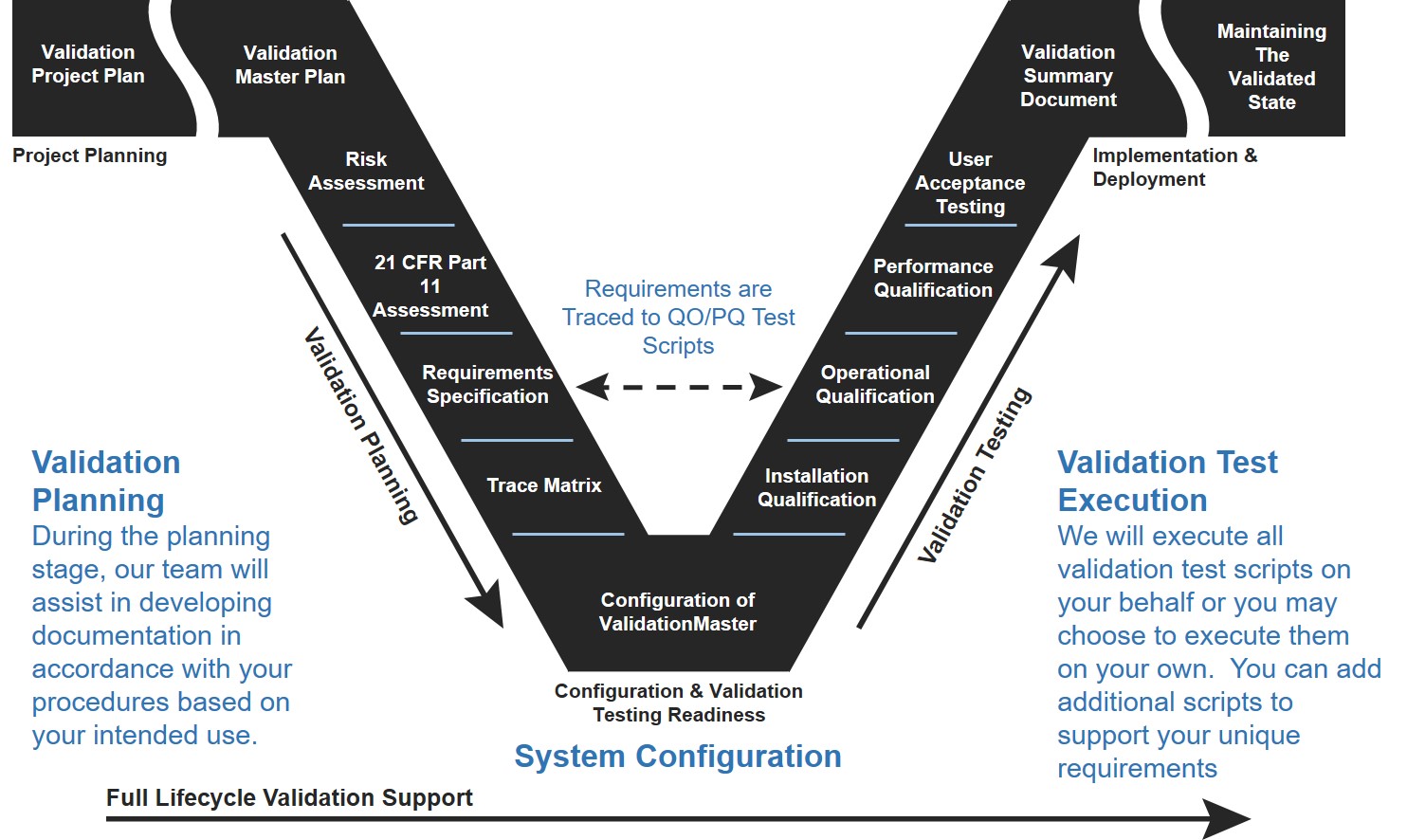If you are like most veteran validation engineers, you have been conducting validation exercises the same old way. You have been gathering user requirements, conducting risk assessments, developing test scripts (most often on paper) and delivering validation documentation and due diligence as required by current global regulations.
Validation processes have not changed very much over the last 40 years (unless you include ISPE GAMP® as revolutionary). However, the systems we validate and the state of play with respect to cybersecurity, data integrity, mobility and compliance has changed in a profound way. Cloud-based applications are seeing increasing adoptions. Platforms such as Microsoft Azure are changing the way companies do business. Mobility is in the hands of everyone who can obtain an affordable device. These game-changing trends call for changes in the way we wake up our sleepy validation processes and use them as opportunities for process improvement.
To help you address these new challenges for the coming year, I offer 5 ways to revive sleepy, manual validation processes for your consideration.
- Think LEAN
- Automate
- Leverage Electronic Document Review & Approval Processes
- Adopt Agile Validation Processes
- Conduct Cybersecurity Qualification
STEP 1. THINK LEAN
Lean manufacturing is a proven process that powered Toyota to success. Lean manufacturing processes were designed to eliminate waste and improve operational efficiency. Toyota adopted lean manufacturing processes and rose to prominence with quality vehicles that outsold most of their competitors in each automotive class. To improve your validation processes in today’s systems environment, it is important to think lean. As we are being asked to do more with less as validation engineers it is important and dare I say critical that you eliminate any wasteful processes and focus on validation processes that in the end at value. This is the basic premise of lean validation.
Throughout my practice, we deliver lean validation services to all of our clients. Lean validation is powered through automation. You can’t have a lean validation process without automation since automation powers lean. Through automation and lean validation processes, we are able to automate the development and management of requirements, incidents, and validation testing in a manner not possible on paper. As you look to wake up your validation processes in 2018, it is important to think lean. I wrote a blog article on the principles and best practices of lean as a good starting point to educate you as to how to maintain and establish lean validation processes.
STEP 2. AUTOMATE
As I mentioned above you cannot adopt lean validation processes unless you automate your validation processes. Automation has often been looked at by validation engineers as a luxury rather than the necessity. In 2018, automation of the validation process is a necessity not a luxury. Electronic workflow used to be the purview of expensive enterprise systems often costing in the millions of dollars. Today, there is no excuse for not automating your process other than simply not wanting to change.
Electronic systems to manage automated validation processes have come a long way in the last 20 years. We offer a system call ValidationMaster™ which was designed by validation engineers for validation engineers. ValidationMaster™ is an enterprise validation management system designed to manage the full lifecycle of validation processes. From requirements to test script development and execution through incident reporting and validation document control, validation master manages the full lifecycle of validation processes and their associated deliverables. The system comes with a fully integrated validation master portal based on SharePoint designed to manage document deliverables in a controlled manner. The system is integrated with electronic signatures and graphical workflows to eliminate document bottlenecks and improve the process of development of your document deliverables.
The development and execution of test cases represents the most laborious part of validation. This is where most validation exercises are either successful or fail. Most often, given the manual cryptic nature that most validation engineers use to develop test scripts, a lot of focus is spent on the actual development of the test script and not the quality of the test case itself. This is due to wasteful processes such as cutting and pasting screenshots or manually typing in information that the validation engineer sees on the screen during the manual test script development process. Both the process of capturing screenshots or typing in information to describe a screen are considered in my view wasteful and don’t add to the value of the test case.
The FDA says a good test case is one that finds an error. As validation engineers we should be focused more on finding errors and software quality than cutting and pasting screenshots into word documents as most of us do. There are things that computers can do much more efficiently and effectively than humans can do and one of them is automated test generation.
There are tools on the market such as ValidationMaster™ that allow you to fully automate this process and eliminate the waste in this process. ValidationMaster™ allows you to navigate through the application that is subject for your validation exercise while the system automatically captures the screenshot and the text and places this text directly into your formatted documents. You simply push a button at the end of the test script development and your test script is written for you. This is standard out-of-the-box functionality. Managing requirements for enterprise applications can also be laborious and challenging.
If you are validating enterprise resource planning systems which consist of hundreds of requirements, keeping track of the version of each requirement may be difficult. Who changes a requirement and why was a requirement changed is often the subject of hours and hours of meetings that waste time and money. ValidationMaster™ has a full-featured requirements management engine which not only tracks the requirement but it tracks the full audit history of a requirement so that you can understand who change the requirement, when was the requirement changed and why. This gives you full visibility to requirements. These requirements can be directly traced to test scripts thereby fully automating requirements traceability in your validation process.
Validation testing can be conducted online as either a fully automated validation test script which requires no human intervention or test cases that are semi-automatic where the validation engineer navigates through each software application and the actual results are captured by the system.
Manually tracking tests runs can be a headache and sometimes error-prone. An automated system can do this for you with ease. ValidationMaster™ allows you to conduct multiple tests runs and it tracks each of the tests runs, the person who ran the test, how long it took to actually execute the test, and the actual results of the test. If an incident or software anomaly occurred during testing the automated system would actually allow you to capture that information and keeps the incident report with each validation test. The time for automation has calm.
If you want to wake up your sleepy validation processes and deliver greater value for your company, you cannot afford to overlook automation of your validation process. Check out a demonstration of ValidationMaster™ to see how automated validation lifecycle management can work for you.
STEP 3 – LEVERAGE ELECTRONIC DOCUMENT REVIEW & APPROVAL PROCESSES
One of the many challenges that validation engineers experience every day is the route review and approval of validation documentation. In many paper-based systems this involves routing around printed documents for physical handwritten signatures. This is the way we did it in the 1980s. 21st-century validation requires a new more efficient approach. As mentioned in the section above on automation, there really is no excuse for using manual paper-based processes anymore. There are affordable technologies on the market that would facilitate electronic document review and approval processes and tremendously speed up the efficiency and quality of your document management processes.
In one previous company that I worked for our document cycle times were up to 120 days per document. With electronic route and review using 21 CFR part 11 electronic signatures we managed to get the process down to three weeks which saved a significant amount of time and money. Electronic document review and approval is a necessity and no longer a luxury there are tools on the market that costs less than a happy meal per month that would allow you to efficiently route and review your validation documentation and apply electronic signatures in compliance with 21 CFR part 11. To wake up your document management processes electronic document review and approval is a MUST.
STEP 4 – ADOPT AGILE VALIDATION PROCESSES
For as long as I can remember, whenever validation was spoken up we talked about the V model. This is the model as shown in the figure below where validation planning happens on the left-hand side of the V and validation testing happens on the right-hand side of the V.

This model often assumed a waterfall approach to software development where all requirements were developed in advance and were tested subsequent to the development/configuration process. In today’s systems environment this is actually not how software is developed or implemented in most cases. Most development teams use an agile development process. Agile software development methodologies have really revolutionized the way organizations plan, develop, test and release software applications today. It is fair to say that agile development methods have now been established as the most accepted way to develop software applications. Having said this, many validation engineers insist on the waterfall methodology to support validation.
Agile development is basically a lightweight software development methodology that focuses on having small time boxed sprints of new functionality that are incorporated into an integrated product baseline. In other words, all requirements are not developed upfront. Agile recognizes that you may not know all requirements up front. The scrum places emphasis on customer interaction, feedback and adjustments rather than documentation and prediction. From a validation perspective this means iterations of validation testing as software iterations are developed in sprints. It’s a new way of looking at validation from the old waterfall approach. This may add more time to the validation process overall but the gradual introduction of functionality within complex software applications has value in and of itself. The Big Bang approach of delivering ERP systems sometimes has been fraught with issues and has sometimes been error-prone. The gradual introduction of features and functionality within software application has its merits. You should adopt agile validation processes to wake up your current processes.
STEP 5 – CONDUCT CYBERSECURITY QUALIFICATION (CYQ)
Last but not least is cyber security. In my previous blog posts, I discussed extensively the impact of cyber security on validation. I cannot emphasize enough how you need to pay attention to this phenomenon and be ready to address it. Cyber threats are a clear and present danger not only to validated systems environments but to all systems environments. As validation engineers our job is to ensure that system are established and meet their intended use. How can you confirm that the system meets its intended use when it’s vulnerable to cyber threats? The reality is you can’t.
Many validation engineers believe that cyber security is the purview of the IT department. This is something that the IT group is responsible for handling and many believe that it has nothing to do with validation. Nothing could be further from the truth. If you remember the old adage in validation “if it’s not documented it didn’t happen” you will quickly realize that you must document your readiness to deal with a cyber security event in the event that one occurs in your environment.
I call this “cyber security qualification” or “CyQ”. A cyber security qualification is an assessment of your readiness to protect validated systems environments against the threat of a cyber event. The CyQ is intended to evaluate your readiness to ensure compliance. One of the ways that you can wake up your validation processes in 2018 is to understand and educate yourself as to the threats that cyber events can have on your current validated systems environment and conduct a CyQ in addition to your IQ/OQ/PQ testing to ensure that you have the processes and procedures in place to deal with any threats that may come your way. If you would like to see an example of a CyQ just write me and I’ll send you one.
2018 is going to bring many challenges your way. It is time that you bring your validation processes to level V validation maturity as shown in the figure below. You need to develop more mature processes that deal with the threats of cyber security and embrace lean validation and agile methodologies. If you’re like most you will be asked to do more with less. Updating old antiquated validation processes is essential to you being able to have the agility to do more with less. It’s about time that you revive your old antiquated validation processes. Are you ready to go lean?







